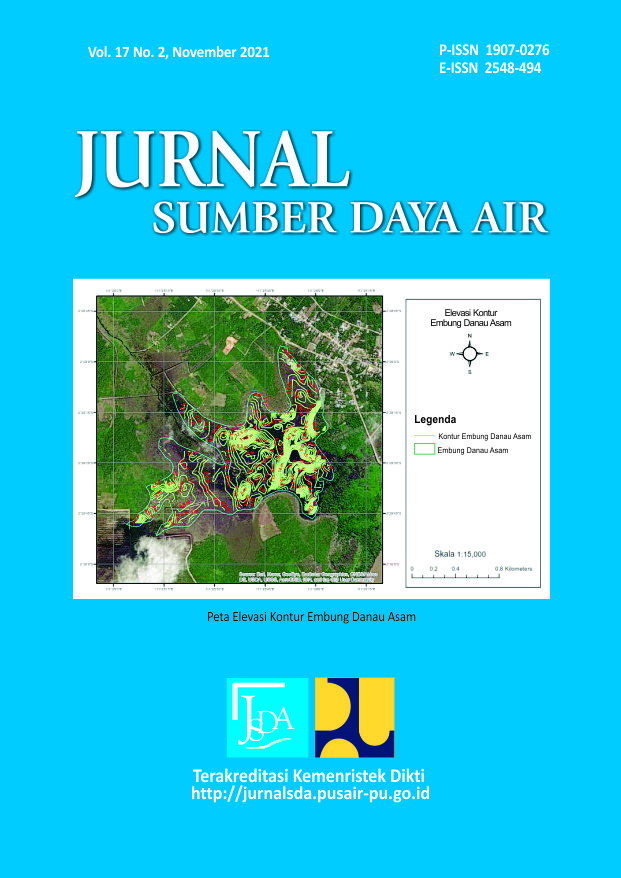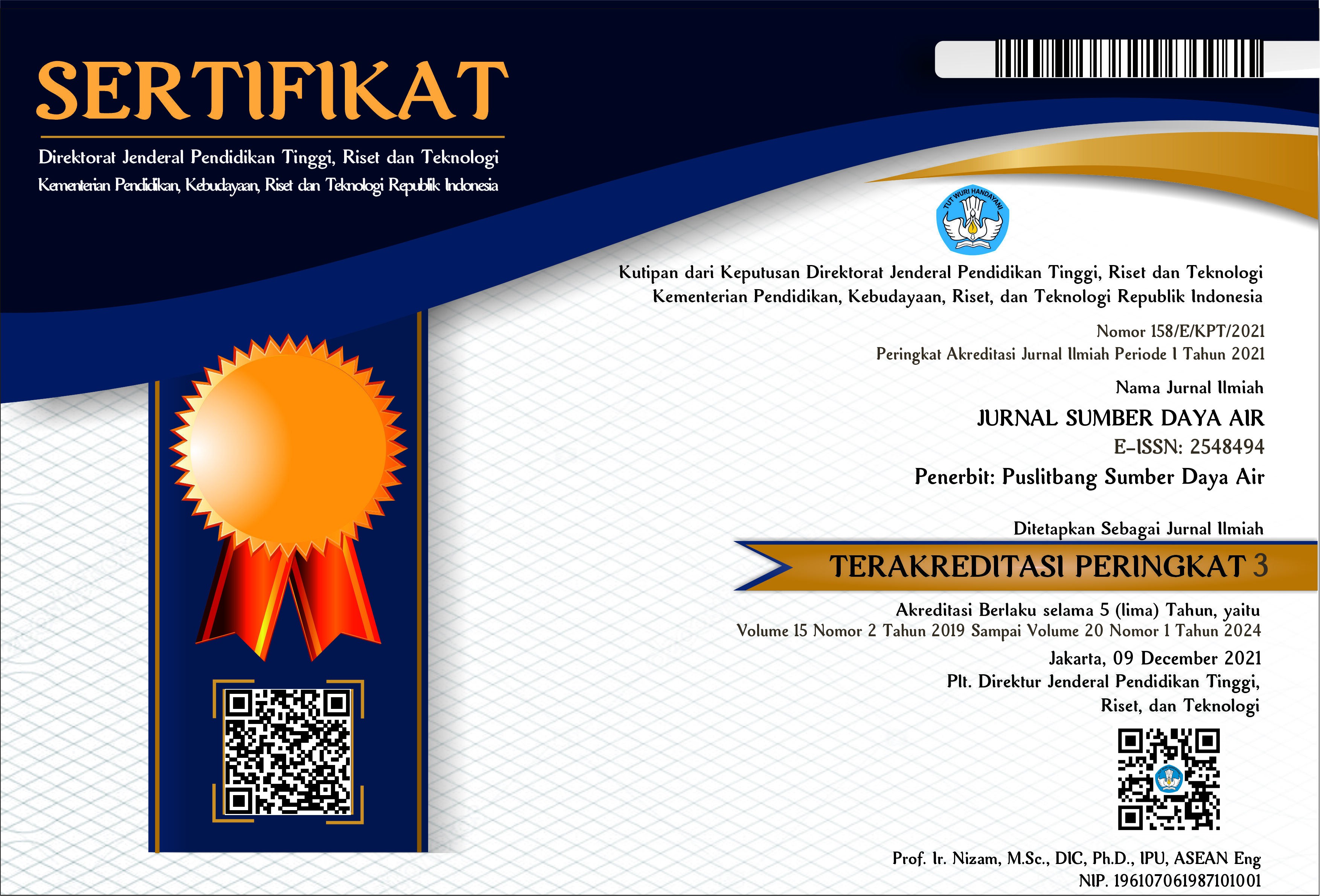ANALISIS KEBUTUHAN KAPASITAS TAMPUNGAN EMBUNG DANAU ASAM KABUPATEN DI KOTAWARINGIN BARAT
DOI:
https://doi.org/10.32679/jsda.v17i2.719Abstract
This study aims to analyze the requirement for the storage capacity of Danau Asam Reservoir as one of the solutions in increasing the availability of water to meet the needs of raw water due to population growth and climate change which is quite extreme. The study was conducted in the Danau Asam Reservoir with source of water from two watersheds that flow into the reservoir, namely the Lopo River Basin with a catchment area of 11.81 Km2 and Kamat Bay with a catchment area of 12.42 Km2 in Kotawaringin Lama District in the West Kotawaringin Regency. The method used is a quantitative approach based on a simulation of the water balance between the inflow and outflow. The inflow parameter is calculated based on 90% probability reliable discharge using the FJ Mock method in two watersheds and the outflow parameter is based on the raw water demand discharge which is calculated based on the population growth rate. The result of the research indicate that the capacity of the Danau Asam Reservoir is 391,842.72 m3 to meet the raw water needs in Kotawaringin Lama District with a population of 35397 people.
Keywords: Drought, Raw Water, Storage, Kotawaringin BaratDownloads
Published
How to Cite
Issue
Section
License
The Authors submitting a manuscript do so on the understanding that if accepted for publication, copyright of the article shall be assigned to Jurnal Sumber Daya Air and Pusat Penelitian dan Pengembangan Sumber Daya Air as publisher of the journal.Copyright encompasses exclusive rights to reproduce and deliver the article in all form and media, including reprints, photographs, microfilms and any other similar reproductions, as well as translations. The reproduction of any part of this journal, its storage in databases and its transmission by any form or media, such as electronic, electrostatic and mechanical copies, photocopies, recordings, magnetic media, etc. , will be allowed only with a written permission from Jurnal Sumber Daya Air and Pusat Penelitian dan Pengembangan Sumber Daya Air.
Jurnal Sumber Daya Air and Pusat Penelitian dan Pengembangan Sumber Daya Air, the Editors and the Advisory International Editorial Board make every effort to ensure that no wrong or misleading data, opinions or statements be published in the journal.




















